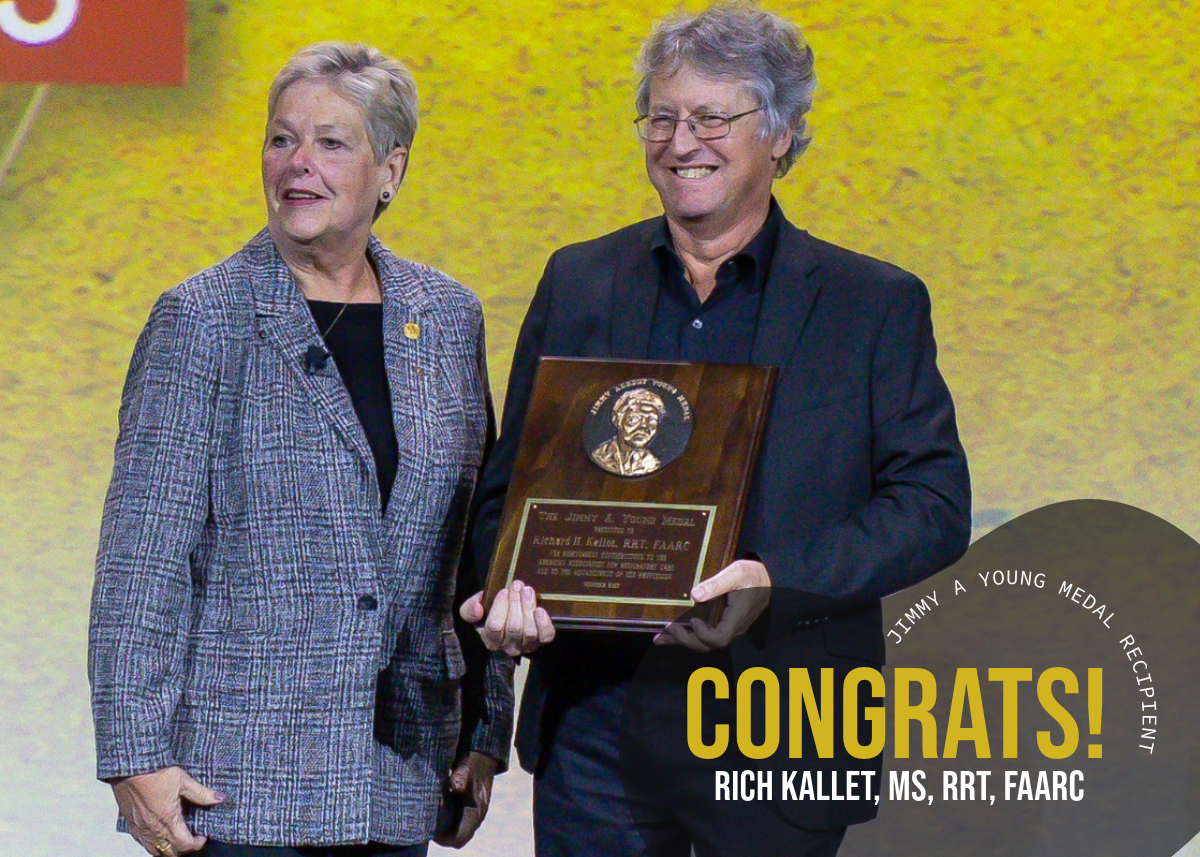
The National Academies of Practice (NAP) was established in 1981 to advocate for the value of interprofessional practice in health care and health care policies dedicated to supporting affordable, accessible, and coordinated quality health care for all.
The NAP currently includes 15 separate Academies representing health professions ranging from nursing and psychology to physical therapy, occupational therapy, speech-language pathology, and more.
The newest Academy on the block is the Respiratory Care Academy, established largely through the hard work and efforts of members of the AARC’s Education Specialty Section.
We needed to be at the table
Nancy Colletti, PhD, RRT, professor and MSRT program director at the University of Cincinnati, got the ball rolling after attending the NAP Annual Meeting and Forum two years ago to give a poster presentation on advancing innovative interprofessional collaboration.
“I had the opportunity to engage with other poster and podium presenters and it was clear respiratory care professionals were not well represented among the interprofessional teams,” she said. ”As I learned more about NAP’s work to publish policy papers on important interprofessional health care topics reflecting current and future issues about practice, education, policy, and research I realized respiratory care professionals needed to be at the table.”
She took her idea to the Education Section discussion list on AARConnect to see if her colleagues in the educational area agreed.
Jennifer Anderson, EdD, RRT, RRT-NPS, chair of the section and program chair at Midwestern State University in Wichita Falls, TX, explains how it all unfolded.
“In November 2021, Dr. Nancy Colletti, a member of the AARC Education Section, posted on AARConnect and provided information about the National Academies of Practice,” she said. ”She asked other section members if there was interest in establishing a Respiratory Care Academy. There was an overwhelming response to the Connect post.”
From there, Dr. Anderson says Dr. Colletti hosted three virtual meetings with section members in December of 2021 and January and February of 2022 to discuss the details involved in getting the new Academy up and running.
“Two core values of NAP stood out to me,” said Dr. Anderson, who attended all three sessions. The first was “Collaboration,” which is defined by the NAP was fostering a work ethic of interprofessional collaboration based on learning from other NAP members. The second was “Interconnectedness,” or the ability to support and target initiatives designed to maximize interprofessional interconnections to advance patient/client-centered public policies, scholarship, and interprofessional collaborative care.
“I felt these were all important things to advance the respiratory care profession,” said Dr. Anderson. She made time for Dr. Colletti to speak at additional section meetings and soon a working group was established to shepherd the Respiratory Care Academy to fruition. The effort was greatly facilitated by the AARC Board of Directors, which agreed to fund memberships for the core group of 15 inaugural Academy members.
“The support from the AARC was instrumental in helping establish the Academy,” emphasized Dr. Anderson.
Building the infrastructure
Nancy Colletti is serving as the Academy’s first chair and Kimberly Clark, EdD, RRT, RRT-NPS, RRT-SDS, RPFT, a clinical associate professor and MSRC program director at UNC Charlotte, is the first vice chair.
“Our roles as chair and vice chair will serve to provide leadership for the new Respiratory Care Academy,” said Dr. Clark. The first order of business is to build the infrastructure for the new group in keeping with the NAP bylaws, but they have already started to promote the Academy to the respiratory therapy community as a whole, presenting during the AARC Leadership Grand Rounds in March.
They have another presentation on the books for the AARC Summer Forum in Fort Lauderdale in July and will be working to provide information about membership and committee service opportunities to support Academy growth and build relationships for collaborative practice initiatives.
Dr. Colletti has already represented the profession during recent virtual Capitol Hill visits as well. “During NAP’s most recent virtual Hill visits last month, interprofessional teams of professionals met with the congressional and senate staff members,” she said. “The two key issues discussed during these meetings were interprofessional education and collaborative practice and telehealth.”
The group was able to convey evidence to lawmakers supporting equitable access to telehealth services and the positive outcomes such services can provide to patients, and they also made the case for interprofessional education and collaborative practice.
“Several of the AARC advocacy campaigns align nicely with NAP’s mission and vision for oxygen reform and telehealth,” she continued.
Key goals
Jennifer Anderson shared the following long-term implications and outcomes of the new Respiratory Care Academy as established by the inaugural group of Academy members —
- Connecting our profession to the health care community centered on the total care of patients, families, communities, and society.
- Professional recognition of practice at the top of our scope by health care peers.
- Interprofessional and intraprofessional collaboration for scholarship, education, and practice.
- Opportunities to influence public policy through interprofessional advocacy, bringing our voice and message to Washington, DC.
- Engagement with members of the interprofessional health care team across the practice continuum.
- Professional development that aligns with recommended competencies in evidenced-based practices moving into the future (e.g. AARC Clinical Practice Guidelines, GINA, ARDSnet, GOLD).
- Leadership development interprofessionally and intraprofessionally, supporting advancing leadership directives.
Another path to a greater voice
Kim Clark says the new Academy is currently reaching out to AARC members who have made significant contributions to the profession and interprofessional practice to ask if they would agree to be nominated for professional membership in the Academy or even as a distinguished fellow.
“Our Academy needs respiratory therapists from clinical, education, leadership, and research to join and be active members to support and promote NAP initiatives, projects, and activities through service, advocacy, and research,” she said. “We are seeing an increase in interprofessional education initiatives and research within our profession. Joining the Respiratory Care Academy will help amplify those efforts by creating new opportunities for collaboration.”
Dr. Colletti agrees, noting that through their participation on NAP committees, respiratory therapists who are members of the Academy will have a voice and a role in the development of partnerships and networking, public policy, scholarship, and professional development, not to mention the Journal of Interprofessional Education and Practice published by the group.
“Participation in NAP is one path towards recognition and respect for the profession of respiratory care,” she said.
Email newsroom@aarc.org with questions or comments, we’d love to hear from you.















